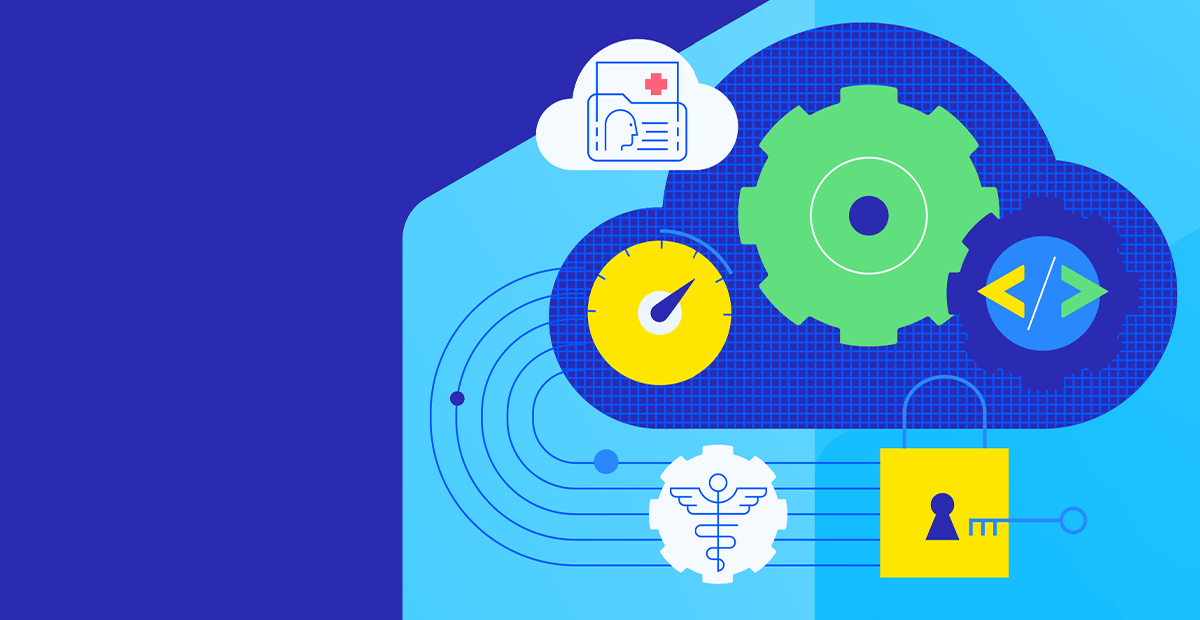Data Fusion: Better Decisions, Reduced Risk and Improved Quality

The Progress MarkLogic team approach to modernization mitigates the need for lengthy and costly integration of systems. Read about MarkLogic’s core data hub capability and how it helps revolutionize government agencies' ability to quickly make an impact.
As more government agencies look to modernize their aging systems, “big data” becomes a bottleneck. With so much data to merge and manage from multiple sources, data fusion helps bring disparate data sources together to form a clear picture. In this post, we will explore why data fusion is the best approach to modernization.
The Problem with Big Data
One of the primary challenges that U.S. Health and Human Services (HHS) agencies face with data is the sheer volume and variety of data they need to operate and serve. The HHS industry generates an enormous amount of data from various sources, including electronic health records, claims, human services programs and more. This data resides in public and private sector systems, making integration even more complex. Managing and making sense of this data can be overwhelming. HHS agencies often struggle to efficiently collect, store and process such vast quantities of information, leading to issues with data silos.
Furthermore, data privacy and security are paramount concerns. HHS agencies deal with highly sensitive and protected personal and medical information. Any breaches or mishandling of this data can have severe legal, ethical and reputational consequences. Therefore, trying to maintain strict compliance with regulations like HIPAA and other regulatory standards is a constant challenge.
Data quality and interoperability also pose significant problems. Inconsistent data standards, incomplete records and data inaccuracies can hinder the process of deriving meaningful insights from big data. Duplicate records compound frustrations when managing large data sets. HHS agencies often grapple with integrating data from diverse sources, making it difficult to create a comprehensive and coherent view of patients or agency clients. These challenges emphasize the need for robust data governance strategies and advanced analytics tools to harness the potential of big data effectively.
MarkLogic Makes Sense of Complex Data
In a world that embraces technology to improve operations and program outcomes, MarkLogic helps to alleviate the challenges of managing big data. It improves the integration and process of managing the data, ultimately enhancing decision making, reducing risk and improving service delivery models across HHS programs.
Better Decisions, Faster
One of the core benefits of having integrated data is creating a 360-degree view of the client, which improves case planning and service delivery. With a more robust data set, enhanced and timely decision-making can be impacted in the following ways:
Resource Allocation Optimization: Data fusion supports better resource allocation by analyzing historical data to identify trends and patterns. HHS agencies can use these insights to allocate resources more effectively so services are directed to the areas where they are most needed. This improves the efficiency of service delivery and optimizes the utilization of available resources. Improved resource allocation leads to improved program delivery in an industry already pressed with workforce issues.
Enhanced Coordination of Care: Data fusion fosters better communication and coordination among healthcare and human service providers. When all relevant data is readily available and shared securely, it streamlines decision-making processes so the right interventions are delivered at the right time. This collaborative approach to care can significantly enhance patient and client outcomes.
Continuous Improvement: HHS agencies can identify areas for process improvement and service quality enhancement by continually analyzing and fusing data. Data-driven insights enable agencies to refine their strategies, workflows and service delivery models, facilitating better responsiveness to evolving community needs.
Reduced Risk
Having a comprehensive data view contributes to decreased risk for agencies, from compliance and regulatory risk management to client wellbeing. The following are some real-life examples.
Compliance and Regulatory Risk Management: Staying compliant with the ever-evolving healthcare and human services regulations is a constant challenge. With a more robust data set, agencies can consolidate and analyze data related to compliance, helping them align documentation, reporting and processes with regulatory requirements. This reduces the risk of non-compliance, associated penalties and legal issues.
Fraud Detection and Prevention: Data fusion allows agencies to combine data from various sources, such as claims data, patient records and historical billing information. By analyzing this integrated data, agencies can more easily detect unusual patterns and anomalies that may indicate fraudulent activities. This proactive approach helps HHS agencies identify and prevent fraud before it escalates.
Client Safety: By integrating data from electronic health records, histories and case management plans, HHS agencies can enhance client safety. One example of this is the use of psychotropic medications for foster youth. Instead of relying on anecdotal data, a case worker can use a data-powered system to more quickly surface the information—reducing the risk of medical errors and over-prescribing.
Improved Quality
Completeness and Comprehensiveness: Data fusion allows for synthesizing diverse datasets, filling gaps and providing a more comprehensive view of the people that agencies serve. For example, in the healthcare sector, patient records from electronic health records (EHRs), insurance claims and laboratory results can be integrated to create a more comprehensive patient profile. This helps physicians and healthcare agencies deliver better, more accurate care services by reducing the chances of missing critical information.
Improved Data Governance: Data governance across programs is always a challenge when attempting to integrate systems. MarkLogic solutions simplify these processes by allowing continued independence in leveraging the backend data hub that provides the practice view of a client.
Data Cleansing and Validation: The MarkLogic team likes to say, “get data in, get it right and get it out.” This means discrepancies and errors become more apparent when different data sources are integrated. The process often involves identifying and rectifying duplicate records, correcting inaccuracies and validating data against predefined standards. Addressing these issues during data fusion makes the resulting dataset cleaner and more reliable.
Building a Data Hub with MarkLogic
The MarkLogic Data Hub helps government agencies overcome the limits of legacy technology and siloed data. MarkLogic improves program delivery by getting accurate information to the right people at the right time—and delivering it faster and more affordably than traditional approaches. With a 360-degree view of data, agencies experience improved data quality, decreased risk and better decision-making.
With MarkLogic’s Data Hub, you can expect:
- Simplified data integration
- Quality data for improved service delivery
- Trusted data at speed and scale
Conclusion
HHS agencies deal with mounds of sensitive client information and data. Traditional, siloed data approaches minimize operational efficiency, thereby limiting program effectiveness. Data fusion unlocks the full programmatic capabilities of HHS agencies by providing accurate data, better compliance and improved decision-making.

Gary Katz
Gary Katz is a Solutions Director and Enterprise Account Manager at Progress MarkLogic with nearly 20 years of experience in the public sector. He is a recognized expert in Database, Search, Linguistic and Master Data Management technologies, supporting national security, public safety and HHS missions.
